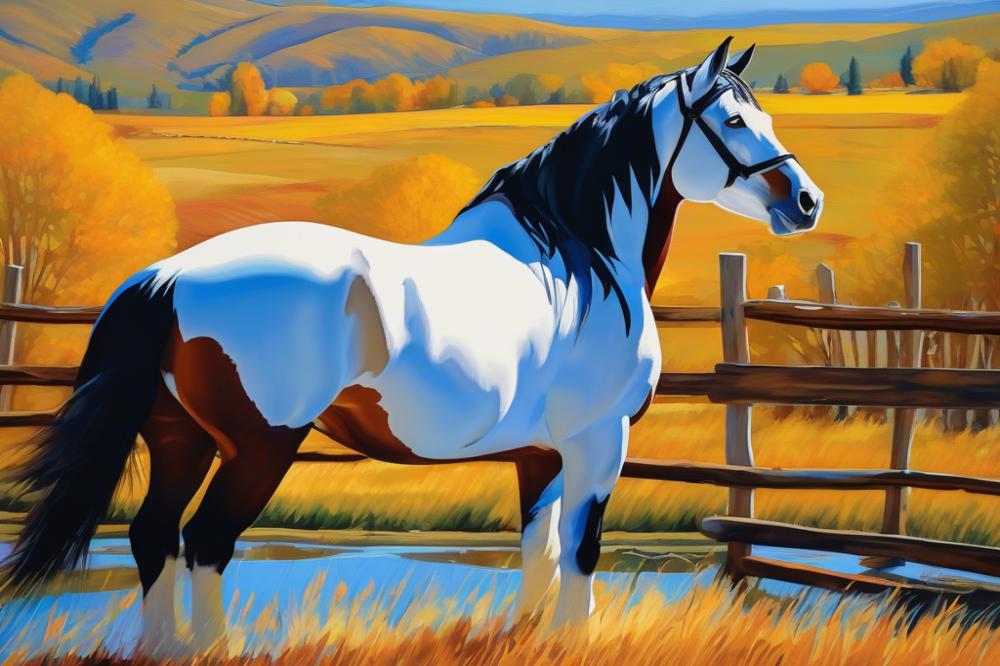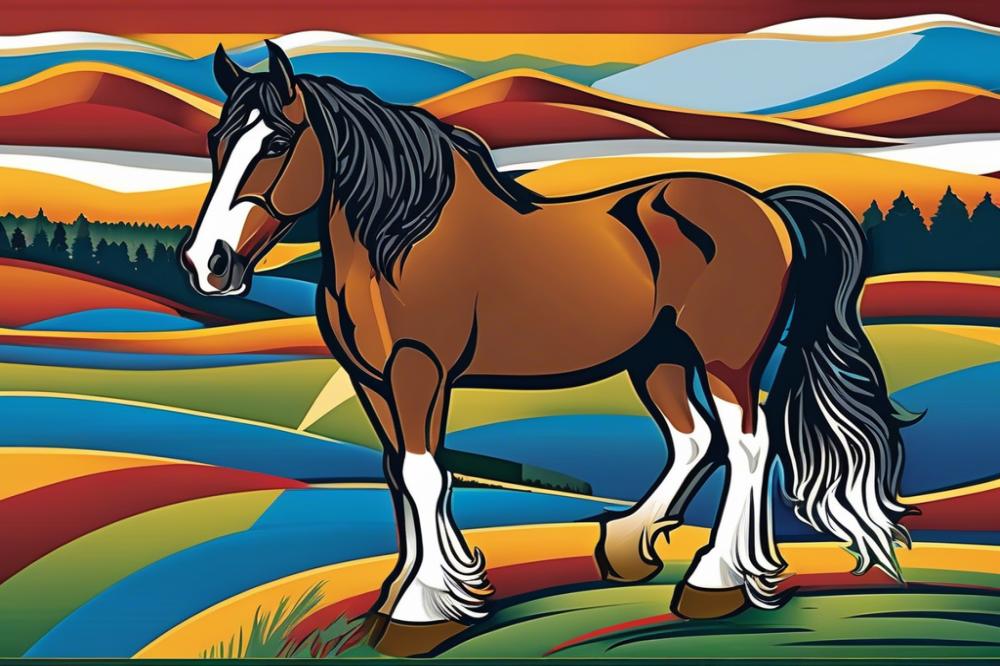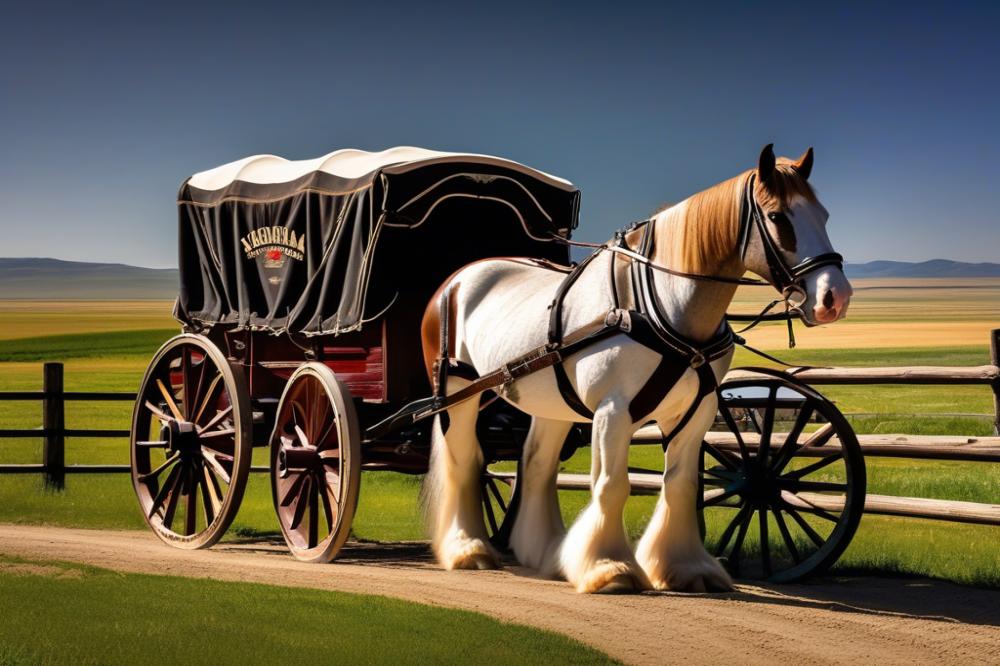Clydesdales of Montana: Pulling wagons and Preserving heritage
Horses have played an integral role in American history, particularly as working animals. Among these, the breed known for their strength and gentle demeanor stands out. Montana has a rich agricultural history, and this breed has significantly contributed to the state’s development. They were once essential to farmers and ranchers, helping with heavy labor that was necessary for survival.
Many families relied on these powerful equines to assist with plowing fields and hauling loads. This connection is deeply embedded in rural life throughout the state. As agriculture evolved, these magnificent creatures became symbols of tradition and endurance. The bond between people and horses creates a story worth telling.
The purpose of this article is to explore the Clydesdales and their role in preserving Montana’s heritage. Tourism often celebrates the state’s agricultural roots. Visitors come to witness this unique connection to the past. Understanding how these horses contribute to the local culture helps to appreciate their significance.
Through anecdotes and interviews, the article will delve into the experiences of those who keep this tradition alive. The stories of everyday life involving these horses reflect a love for the land and its history. In doing so, we hope to highlight the importance of preserving this heritage for future generations.
Clydesdales: A Historical Perspective

The Clydesdale breed originated in Scotland, specifically in the Clydesdale river area. Farmers needed strong horses for pulling heavy loads and working the fields. Selective breeding began in the 18th century, and the horses soon became famous for their strength and gentle nature. Their large size and distinctive feathering on their legs made them not only powerful but also quite striking.
Many Clydesdales were brought to North America in the mid-19th century. American settlers recognized the animals’ value for agriculture and transportation. They quickly adapted to the diverse farming needs of the continent. Larger farms in the Midwest began using them for various tasks, from plowing fields to hauling goods.
During the late 1800s, Clydesdales played a significant role in the expansion of American farming. Their powerful build allowed them to thrive in tough conditions. Horses could pull plows that prepared land for crops. They became the backbone of many farming operations. Farmers relied on them for work, and these gentle giants helped cultivate vast areas of land.
The breed’s usefulness extended beyond everyday farming. Clydesdales also participated in hauling freight and materials during the industrial boom. As railroads expanded, they were instrumental in moving goods. Communities depended on these horses for economic growth at a critical time in American history.
In summary, the Clydesdale breed has a rich history filled with hard work and dedication. Their journey from Scotland to North America reflects the needs of agriculture and industry. Indeed, they embody a significant part of both farming and transport in the early American landscape.
The Role of Clydesdales in Montana’s Agriculture

The use of Clydesdales in farming has a deep-rooted history in Montana. Farmers once relied on these powerful horses to pull heavy wagons and plow fields. They were essential for transporting goods to markets. With sturdy builds and calm demeanors, these animals made farming much easier. Their strength helped ensure that crops were planted and harvested efficiently.
Montana’s agricultural landscape has seen a significant impact from this breed. Local economies thrived due to the productivity that these horses provided. Families depended on them not just to work, but also as part of their way of life. Even today, many cherish the connection between farming and these majestic creatures.
Modern farming practices have shifted dramatically due to technology. However, some farmers still use horses in unique ways. They appreciate the benefits of using animal power in sustainable farming. This method can create a better relationship with the land. It also attracts visitors interested in the traditional aspects of agriculture, supporting local businesses in turn.
Clydesdales offer companionship to farmers as well. These gentle giants often become part of the family. From riding in parades to participating in local festivals, they help preserve a cultural heritage. The bond between humans and horses remains strong in many rural communities.
Clydesdales and Heritage Preservation
Preserving the heritage of these majestic animals in Montana is crucial. The bond between locals and these gentle giants runs deep. For many, this tradition goes beyond farming; it connects families, stories, and history.
Efforts are underway to maintain traditional usage and breeding techniques. Local farmers and ranchers play a vital role in these initiatives. Engaging with experienced breeders promotes a sense of continuity within the community. Many workshops and events focus on educating younger generations about proper care and handling.
Cultural significance cannot be overstated. In local communities, these horses symbolize strength and perseverance. Festivals often feature parades showcasing them, reinforcing their role in regional pride. Such events gather people together, allowing them to celebrate shared histories.
Moreover, the charm of these animals captivates locals and visitors alike. Their impressive size and docile nature create a bond that many cherish. From children to elders, everyone finds joy in their presence. This connection fosters a commitment to preserving their legacy for future generations.
Tourism and Clydesdales in Montana
Clydesdales as a Tourist Attraction in Montana
Montana’s vast landscapes are more than just beautiful scenery. They hold a special place for those who appreciate the Clydesdales. These gentle giants attract visitors from all over the country. Tourists come to experience a piece of Montana’s agricultural heritage. Seeing such magnificent horses is a thrilling experience. Their presence enchants both young and old alike.
Experiential Opportunities: Wagon Rides, Farm Tours, and Festivals
Visitors can enjoy wagon rides through the rolling hills. Riding behind these powerful animals creates unforgettable memories. Farm tours offer a closer look at their daily lives. Watching them interact with farmers gives a sense of connection to tradition. Festivals throughout the year celebrate these majestic creatures. Events feature fascinating demonstrations and enjoyable activities for all ages. Local communities come together to share their love for these animals.
Impact of Clydesdale Tourism on Local Economy and Heritage Awareness
Spending by tourists significantly boosts the local economy. People often visit nearby shops, restaurants, and lodging establishments. This influx of visitors leads to job creation. Moreover, educational programs raise awareness of Montana’s heritage. Connecting people to the state’s agricultural roots is vital. As visitors learn, they carry that knowledge back home. This exchange of culture enriches both residents and tourists alike. The bond formed over shared experiences creates lasting memories.
Animal Preservation and the Future of Clydesdales
Efforts to conserve Clydesdale populations are becoming more important as fewer people engage in traditional farming. Breeders and enthusiasts are working together to create programs that maintain genetic diversity. These initiatives often include education about caring for draft horses and promoting responsible breeding practices. Such actions can help ensure that these horses remain a part of rural life.
Challenges are numerous for this majestic breed. Habitat loss and shifting agricultural practices make it tough for them to thrive. Many young people view farming as unappealing. As a result, fewer individuals are interested in working with draft horses. This trend threatens not just the animals but the heritage they represent.
Farming practices continue to evolve. Many techniques now rely heavily on machinery, which leaves little room for draft horses. Traditional methods that once relied on these animals are vanishing. Yet, there remains a small but passionate community dedicated to keeping these practices alive.
Future prospects for Clydesdales are mixed. Some enthusiasts believe there may be a revival in their use for tasks like logging or pulling wagons. Events celebrating draft horses often draw crowds, fostering renewed interest. This enthusiasm can introduce the next generation to the rich history of agriculture and working animals.
Community support plays a meaningful role. Local fairs and gatherings often highlight these powerful horses, reminding people of their importance. Schools and programs that teach children about agriculture can instill appreciation for all draft horse breeds. Promoting awareness is key to preserving this unique part of rural heritage.
Honoring Montana’s Equine Heritage
Montana’s bond with powerful draft horses is significant. These majestic animals are more than just workhorses; they embody a rich heritage tied to the state’s agricultural roots. Across the rolling landscapes, they pull heavy wagons, showcasing their strength and beauty. Events featuring these magnificent creatures remind us of the hardworking spirit of rural America. Enthusiasts gather to celebrate, preserving traditions handed down through generations.
Support for such heritage is essential. As modern advancements shift how we live and farm, the stories of the past deserve to be kept alive. Communities can play a crucial role in this preservation. By participating in local events, sharing knowledge, and fostering connections, we can guarantee that future generations appreciate this cultural legacy.
In closing, the lasting impact of these powerful horses extends beyond their physical strength. They symbolize perseverance, teamwork, and connection to our history. Rural America thrives on such bonds. Supporting the continued presence of these animals in our lives pays respect to the history they carry. The enduring legacy of these noble steeds is a reminder of who we are and the values we hold dear.



